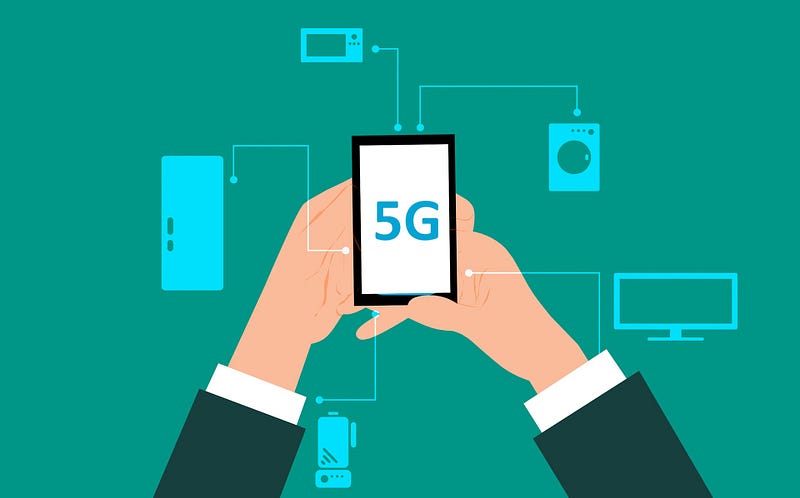Understanding IoT Protocols and Standards for Effective Solutions
Written on
Introduction to IoT Standards and Protocols
Given the intricate nature of IoT ecosystems, it is crucial to grasp the relevant standards and protocols that facilitate the development of robust solutions. Effective IoT implementations necessitate the adoption of standardized devices, protocols, and communication frameworks. Numerous standards have been established by various organizations, making it vital to comprehend the offerings from recognized entities like IEEE, IETF, and ITU.
Key IoT Standards
Architects and designers of IoT solutions must familiarize themselves with the following key standards:
- IoT Data Link Standards
- IoT MAC Standards
- IoT Routing Standards
- IoT Network Standards
- IoT Transport Layer Standards
- IoT Management Standards
In addition to these, open-source organizations like The Open Group have introduced standards for IoT lifecycle management, specifically the O-DF (Open Data Format) and O-MI (Open Messaging Interface).
Another significant contributor to IoT standards is the LoRa Alliance, a non-profit organization with over 500 member companies. Other entities, such as The Things Network, provide essential open tools and a global network, facilitating the creation of secure and scalable IoT applications at minimal costs.
IoT Standard Protocols
IoT solutions rely on a variety of standard protocols, along with newly developed IoT-specific ones. When architecting IoT protocols, it’s essential to take into account long-range communication systems such as LPWAN (Low-Power Wide Area Network). LPWAN is a wireless protocol that operates at low bit rates, enabling extended communications between IoT devices and cloud systems through wireless gateways.
LPWAN is particularly known for its low energy consumption. In the IoT landscape, LoRaWAN is frequently mentioned as it connects devices using LoRa wireless technology, suitable for both public and private deployments, operating on globally unlicensed frequencies. The economic advantage of LoRa lies in its ability to sustain long battery life across numerous devices within IoT ecosystems, with a range extending up to 30 km in flat terrains.
Another noteworthy protocol is Sigfox, which employs Ultra NarrowBand (UNB) technology. Sigfox's signals are highly efficient spectrally and effectively minimize noise. This protocol also boasts extended battery life, which positively impacts cost management for IoT solutions. Based in France, Sigfox should be considered for its cost-effectiveness, performance, and availability within IoT solutions.
As we discuss protocols from a performance standpoint, it’s impossible to overlook the potential of 5G. The promise of 5G is compelling, as it significantly enhances data communication capabilities. Being the fifth generation of cellular wireless protocol, 5G is expected to unlock considerable business value for future IoT deployments. Currently, most IoT systems operate on 4G, which struggles to handle large data volumes generated by numerous dispersed devices.

With 4G's performance limitations in mind, 5G emerges as a promising facilitator of next-gen IoT capabilities. Industry analysis indicates that 5G can cultivate more IoT-friendly ecosystems, offering benefits such as accelerated data transmission and significantly reduced network latency. Furthermore, 5G could potentially lower network energy consumption by around 90%. Thus, incorporating 5G into future business-critical IoT strategies is essential for enhancing performance.
Edge and Cloud Computing Protocols
It is also vital to consider Edge and Cloud Computing protocols, particularly middleware-related ones, for various business applications. Notable protocols include STOMP (Simple Text Oriented Messaging Protocol), MQTT (MQ Telemetry Transport), CoAP (Constrained Application Protocol), and AMQP (Advanced Message Queuing Protocol). While STOMP, MQTT, and CoAP are designed to enhance availability and performance in resource-constrained environments, AMQP focuses primarily on security.
To facilitate easier recall of the relevant protocols, I have compiled a concise list categorized into nine broad groups. This list includes popular protocols that can be integrated into IoT solutions. Understanding the advantages and disadvantages of these protocols allows IoT architects to make informed design decisions, leading to high-performing and cost-effective solutions.
- Discovery: mDNS, DNS-SD
- Session Layer: HTTP, MQTT, COAP, AMQP, XMPP
- Communications and Transport: Bluetooth, LPWAN, WiFi
- Identification: uCode, IPv6, URIs, EPC
- Network Layer: 6LoWPAN, 6TiSCH, 6Lo, IPv6 over G.9959, IPv6 over Bluetooth Low Energy, RPL, CORPL, CARP
- Data Link Layer: Zigbee Smart Energy, Sigfox, LTE-A, LoRaWAN, WirelessHART, Z-Wave, Bluetooth Low Energy, DASH7, HomePlug, G.9959 Weightless, DECT/ULE, IEEE 802.15.4e, IEEE 802.11
- Device Management: TR-069, OMA-DM
- Semantic: JSON-LD, IoTDB
- Multi-layer Frameworks: Alljoyn, IoTivity, Weave, Homekit
In addition to standards and protocols, considering APIs (Application Programming Interfaces), communication patterns, and application-level communications is crucial, which I plan to elaborate on in a forthcoming article.
Thank you for exploring my insights.
Additional Resources
The first video provides a comprehensive guide on selecting the right network protocol for your IoT project, essential for ensuring efficient communication in IoT systems.
The second video offers a practical overview of industrial IoT connectivity, focusing on standards and protocols, which is invaluable for anyone looking to deepen their understanding of IoT infrastructures.